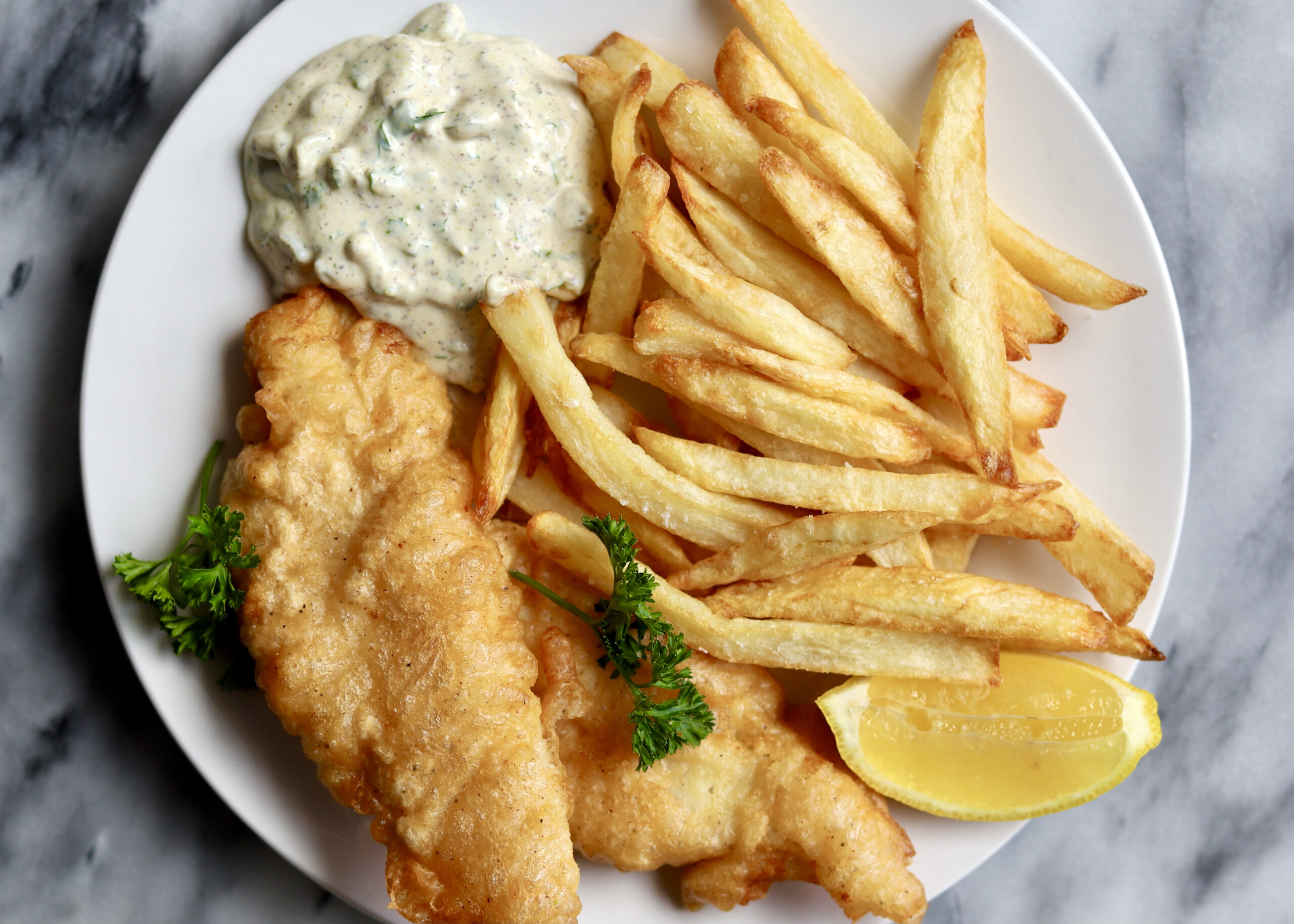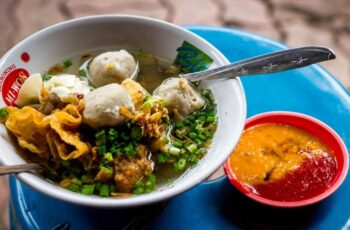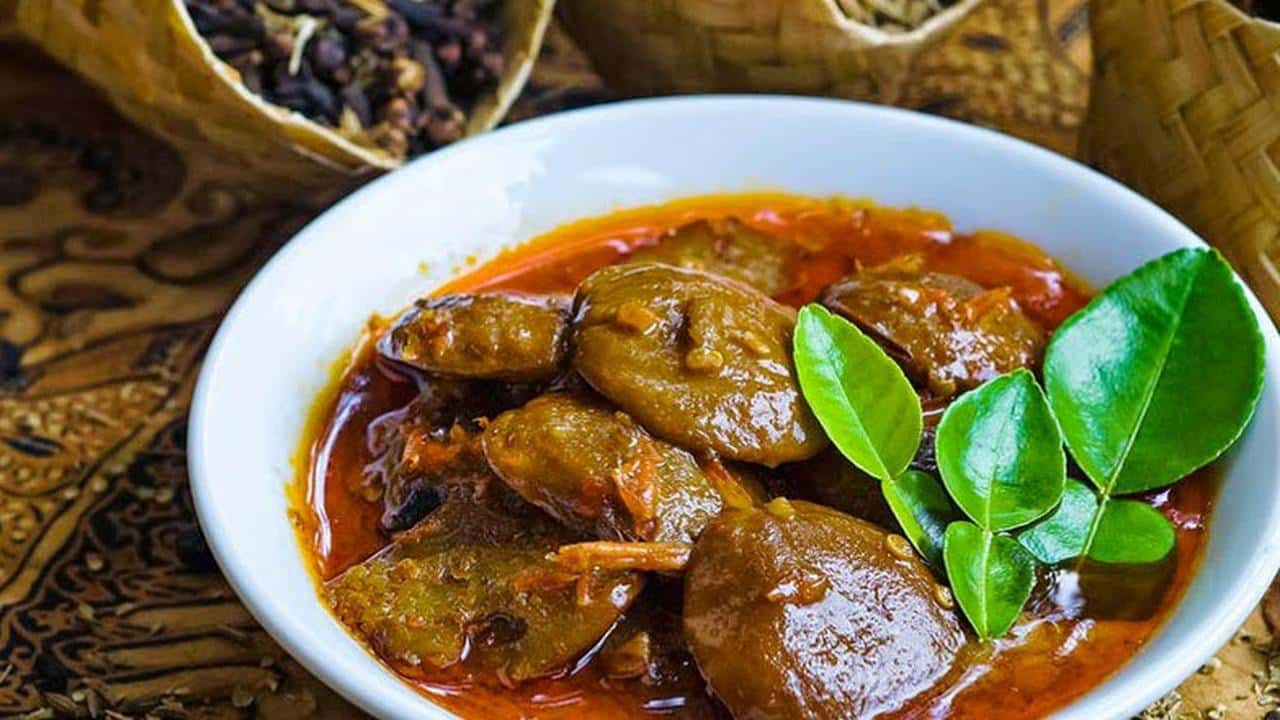
Semur Jengkol: Unraveling the Rich, Complex, and Controversial Heart of Indonesian Cuisine
In the vast and vibrant tapestry of Indonesian cuisine, few dishes evoke such a potent mix of adoration and apprehension as Semur Jengkol. For its devotees, the mere mention of its name can trigger a cascade of sensory memories: a dark, glossy sauce clinging to tender, starchy morsels; a complex aroma of sweet soy, warm spices, and an unmistakable earthiness. For the uninitiated or the wary, however, the dish is defined by a single, notorious characteristic: its powerful, lingering smell.
Semur Jengkol is a culinary paradox. It is a delicacy born from a humble, challenging ingredient, transformed through patience and culinary wisdom into something deeply satisfying. To dismiss it based on reputation alone is to miss out on a dish that encapsulates the soul of Indonesian comfort food—a testament to the ingenuity of a cuisine that finds beauty and flavor in the most unexpected places. This is a deep dive into the world of Semur Jengkol, a journey to understand its controversial star ingredient, the meticulous art of its preparation, and its cherished place in the heart of a nation.

The Protagonist: Understanding Jengkol
Before one can appreciate the semur, one must first understand the jengkol. Known scientifically as Archidendron pauciflorum, the jengkol bean (also called dogfruit or jering) grows in large, dark brown pods on trees native to Southeast Asia. Inside these pods are several disc-shaped, reddish-brown beans, each encased in a thin skin. Raw, they are hard, astringent, and possess a formidable odor that intensifies after consumption.
This infamous smell is due to the presence of djenkolic acid, a sulfur-containing amino acid. When metabolized by the body, it breaks down into smaller, highly volatile sulfur compounds, which are then excreted through urine, sweat, and breath, creating a potent and long-lasting aroma. This is the primary reason for jengkol’s polarizing reputation.
Furthermore, jengkol must be handled with respect and knowledge. Consuming it raw or improperly prepared in large quantities can lead to a rare but serious medical condition known as djenkolism, where the djenkolic acid crystallizes in the urinary tract, causing pain, obstruction, and in severe cases, acute kidney failure. Yet, despite these risks, generations of Indonesians have mastered the techniques to safely prepare and enjoy this unique ingredient, unlocking its hidden virtues. When cooked correctly, jengkol sheds its harshness, revealing a delightful texture reminiscent of a large chestnut or a boiled potato—starchy, yielding, and slightly crumbly—with a unique nutty and subtly bitter flavor that provides a perfect canvas for rich sauces.
The Art of Taming the Bean: Preparation is Everything
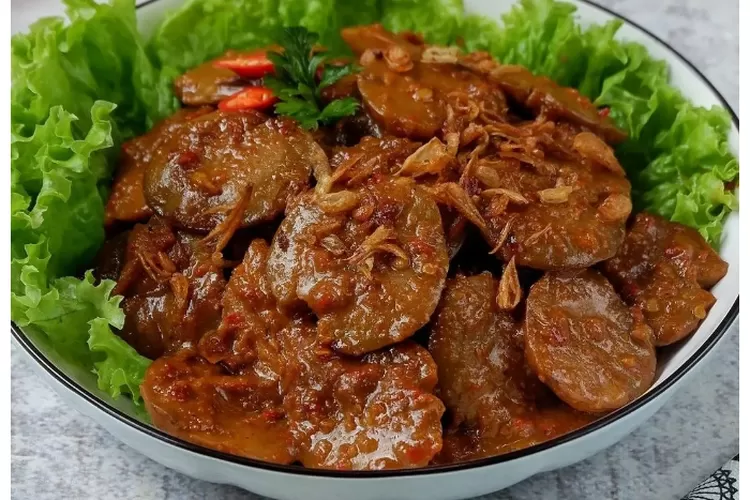
The journey from a pungent, tough bean to a tender, delectable morsel is a labor of love, a multi-step process that is non-negotiable for any good Semur Jengkol. This transformation is the culinary magic at the heart of the dish.
First comes the soaking. The jengkol beans are typically soaked in water for at least 24 hours, with the water being changed several times. This initial step helps to soften the beans and leach out some of the bitter compounds and djenkolic acid.
Next is the boiling, a crucial stage for neutralizing the odor. The soaked beans are boiled until tender, a process that can take an hour or more. This is not a simple boil in plain water. Indonesian cooks employ a range of traditional aromatics to add to the boiling pot, each with a specific purpose. Common additions include guava leaves (daun jambu biji), which are renowned for their odor-absorbing properties, a handful of coffee grounds, or fragrant Indonesian bay leaves (daun salam) and kaffir lime leaves. This aromatic bath is the first layer of flavor and the most important step in taming the bean’s wilder instincts.
Once boiled to tenderness, the beans are drained and cooled. Each bean is then individually peeled to remove its thin outer skin. The final preparatory step is known as digeprek—a gentle smashing or flattening of each bean with the side of a cleaver or a pestle. This is not done to pulverize it, but to crack its structure slightly. This action serves two purposes: it further tenderizes the bean and, more importantly, it creates a larger, more porous surface area, allowing it to greedily absorb the rich, flavorful sauce it will soon be braised in.
The Soul of the Dish: The Semur Sauce
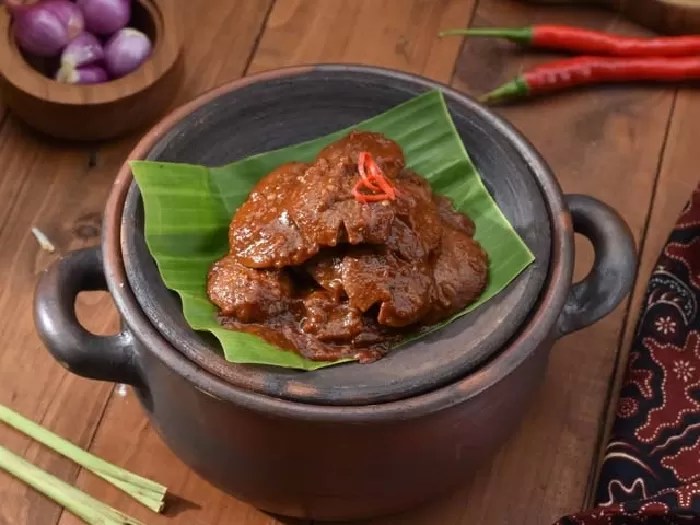
With the jengkol tamed and ready, the focus shifts to the sauce that gives the dish its name: semur. The term “semur” is derived from the Dutch word smoor, meaning to braise, a culinary technique introduced during the colonial era and wholeheartedly adopted and adapted into Indonesian cuisine. At its core, a semur is a slow-cooked stew defined by its use of kecap manis, a thick, sweet, and syrupy Indonesian soy sauce.
The foundation of the semur sauce is the bumbu, a fragrant spice paste. While recipes vary from family to family and region to region, a classic bumbu for Semur Jengkol typically includes shallots, garlic, candlenuts (kemiri) for a creamy texture, coriander seeds, and a touch of white pepper. These ingredients are ground together into a smooth paste using a traditional stone mortar and pestle (ulekan) or a modern food processor.
The cooking begins by sautéing this bumbu in oil until it becomes aromatic and releases its fragrant oils. To this, whole spices are added to build layers of complexity: Indonesian bay leaves, a bruised stalk of lemongrass, and a slice of galangal. Then, the flattened jengkol beans are tossed into the pot, coating them in the fragrant paste. Finally, the braising liquid is added—a generous amount of kecap manis, a splash of regular soy sauce for saltiness, and enough water to almost cover the beans. A hint of ground nutmeg and sometimes cloves are added for warmth, a clear nod to the dish’s Dutch-Indonesian heritage.
The pot is then brought to a simmer, the heat is lowered, and the magic of the slow braise begins. For an hour or longer, the jengkol stews gently in the dark, bubbling sauce. During this time, the flavors meld and deepen, the sauce reduces and thickens into a glossy glaze, and the jengkol absorbs every nuance of the sweet, savory, and aromatic liquid, becoming incredibly tender and flavorful.
A Symphony of Flavor and Culture

The final dish is a sight to behold: dark, glistening beans coated in a thick, almost black sauce. The flavor is a profound and harmonious symphony. The dominant note is the deep, caramel sweetness of the kecap manis, perfectly balanced by the savory umami of the soy and the aromatic warmth of the spice paste. The nutmeg provides a subtle, sweet spice in the background, while the herbs lend a faint, fresh complexity.
And then there is the jengkol itself. The texture is sublime—fork-tender with a satisfying, starchy bite. Its inherent nutty, slightly bitter flavor has not been erased but rather embraced, providing a beautiful, earthy counterpoint to the sweetness of the sauce. It is this interplay between the sweet glaze and the earthy bean that makes Semur Jengkol so addictive to its fans.
Served simply with a plate of hot steamed rice, Semur Jengkol is the ultimate comfort food. It is a staple in Betawi (native Jakartan) and Sundanese (West Javanese) households and is a common sight in warteg (small, family-run eateries) across the country. It stands proudly alongside other beloved dishes in a nasi rames or nasi uduk spread, its bold flavor holding its own against spicy sambals and rich curries.
Semur Jengkol is more than just a meal; it is an experience and a statement. It represents a culinary philosophy of resourcefulness and transformation. It challenges the palate and rewards the adventurous. To love Semur Jengkol is to appreciate the beauty in the unconventional, to understand that with care and wisdom, even the most challenging ingredients can be elevated to the status of a masterpiece. It is a dish that asks for patience, rewards it with unparalleled flavor, and remains one of the most authentic, complex, and unforgettable tastes of Indonesia.
Semur Jengkol is a culinary paradox from Indonesia | in opo wae, wis opo wae, and on last post i/admin have give some post/articles and many pictures gallery about " Nasi Kebuli – The rich and aromatic Indonesian dish." if you have not seen it, please check out before seeing this. (just click text in "anchor text" to read or see last post first), I have packed all images collections become 1 gallery images on post and this time i just want to share again from my collections to could be useful :D. These pictures of Semur Jengkol is a culinary paradox from Indonesia, I have collected in a fairly long time, and from various media such as the Internet, books, magazines, newspapers, comics, etc like as from search engine and other sources to be used as ideas for you. and these images has combined into one page on 0 Photos/images Gallery below. lets views.. o[^_^]o.Semur Jengkol is a culinary paradox from Indonesia pictures collections gallery
Semur Jengkol is a culinary paradox from Indonesia is a nice pictures and stock photo for your computer desktop or your smartphone device (ipad, tablet, blackberry, iphone, and other device) and also for your personal use. Free available for desktop wallpaper or additional image collections for your all needs. And was uploaded by admit at date July 1, 2025. You can download it in your computer by clicking download button to save image... have nice day and have fun guys..
This 1 image in featured post from 0 Photos/images Gallery and awesome picture selections about Semur Jengkol is a culinary paradox from Indonesia is available to download. "Download & Save" images/pictures/wallpapers now and this Is one of the post that listed in packed to Category is Foods directory, with image dimension/resolution size is 1280 × 720 px and size image/picture file is 86 KB with original link post ID is : https://powae.pw/of-course-here-is-a-1200-word-article-about-semur-jengkol/. Get download/save images in post and gallery, "download" images or "preview" it on a bigger image for spesification sample in Large size (full attachment size) here : [Download & View to Large size]. Just Simple way, in thumbnail or in Gallery. *Click images to view Large Size.We collect this wonderful image from online and choose one of the best for you. Pictures collection that posted here was carefully chosen and published by author after choosing the ones which are best among the others. So, ultimately we make it and here these list of best image for your inspiration and informational reason regarding the Semur Jengkol is a culinary paradox from Indonesia as part of blogsite exclusive updates collection. So, take your time and find the best informations and pictures posted here that suitable with your needs and use it for your own collection and personal use. About Image information: Image has been submitted and You are able to give your opinion as evaluations to our web site value.
Don't forget to comment if you interest with this images, you can share this post to social media like as facebook, twitter, google+, pinterest, stumbleupon, and more. just click social media buttons for share this post Semur Jengkol is a culinary paradox from Indonesia Now. :)
Thanks for your visit, I hope you happy come to opo wae, wis opo wae, and get what you're looking for. And hope sometimes you will come back again here. All you need to do is help us develop by discussing this Semur Jengkol is a culinary paradox from Indonesia if you like it "leave your comment". have fun, Thank you.



